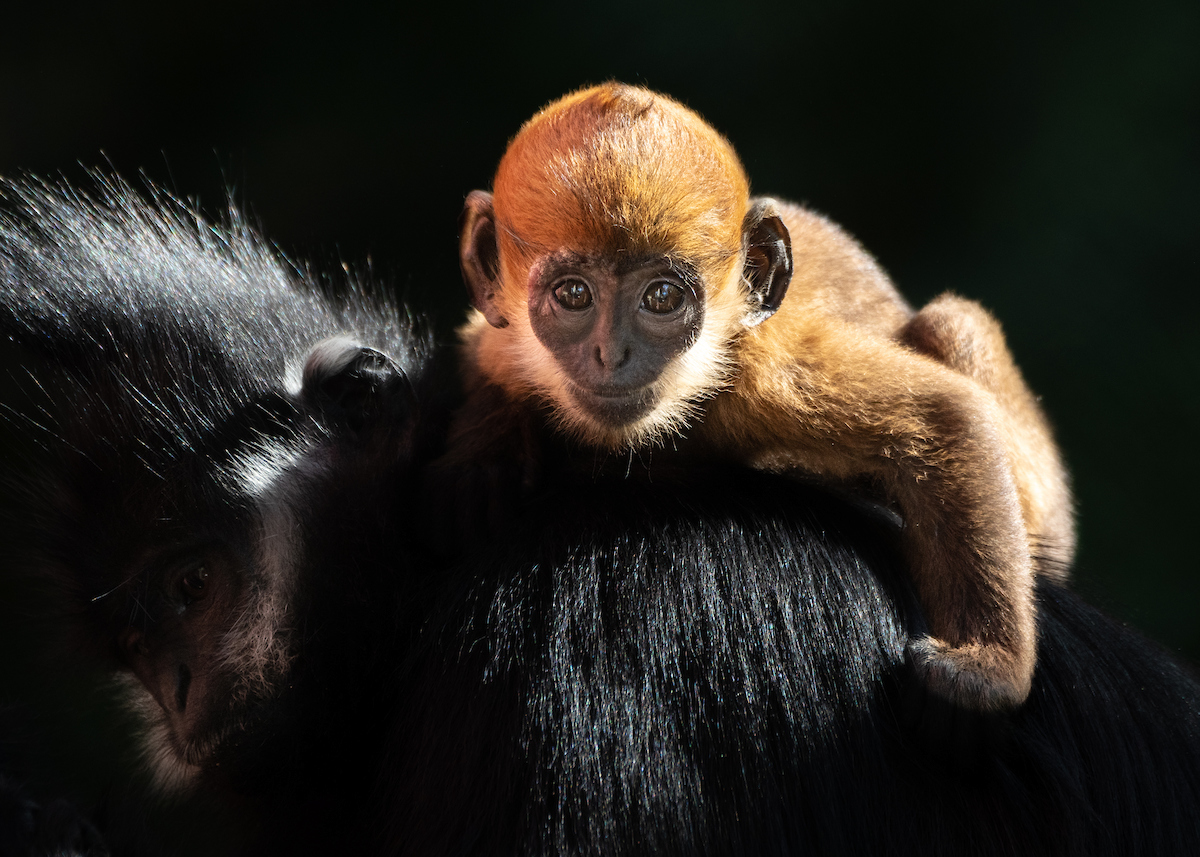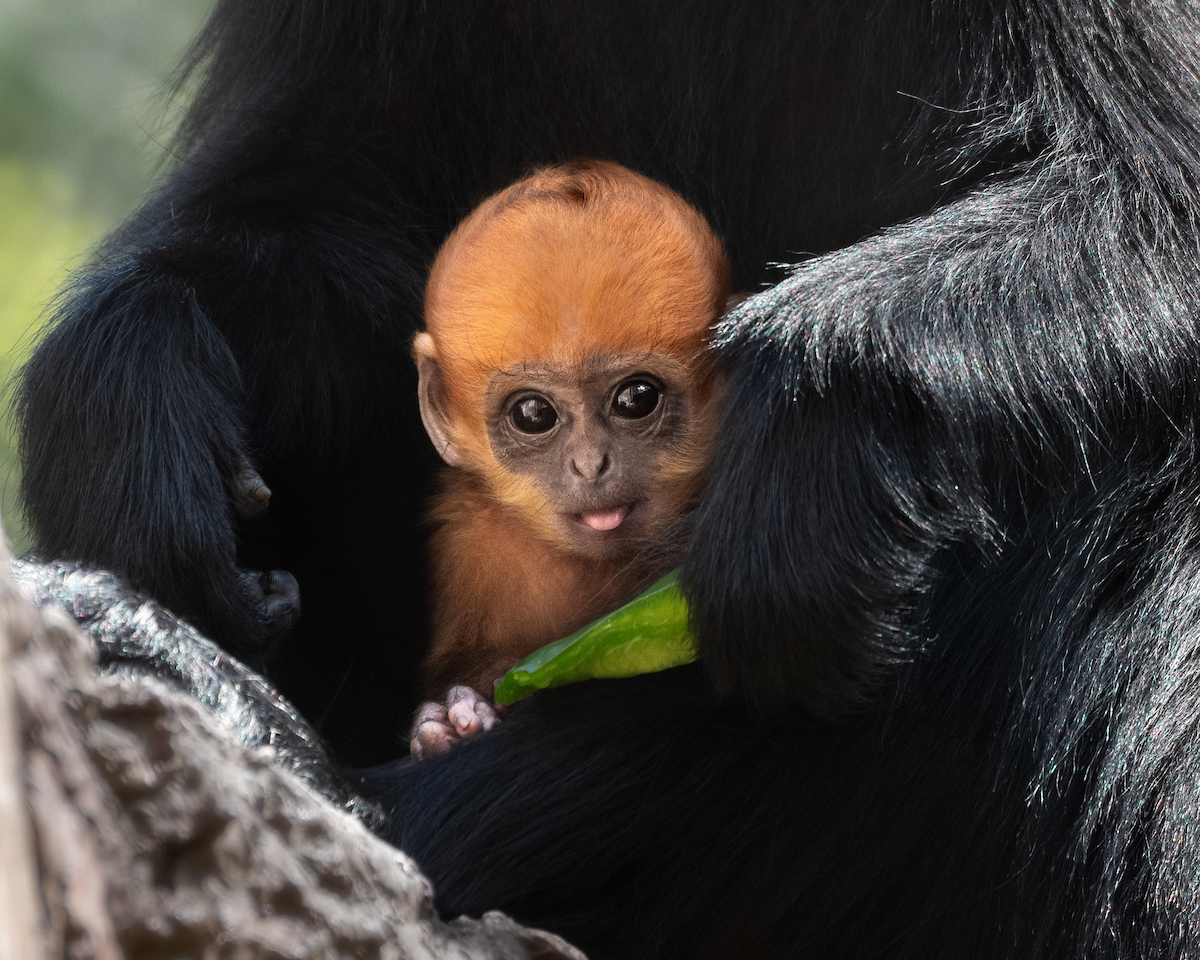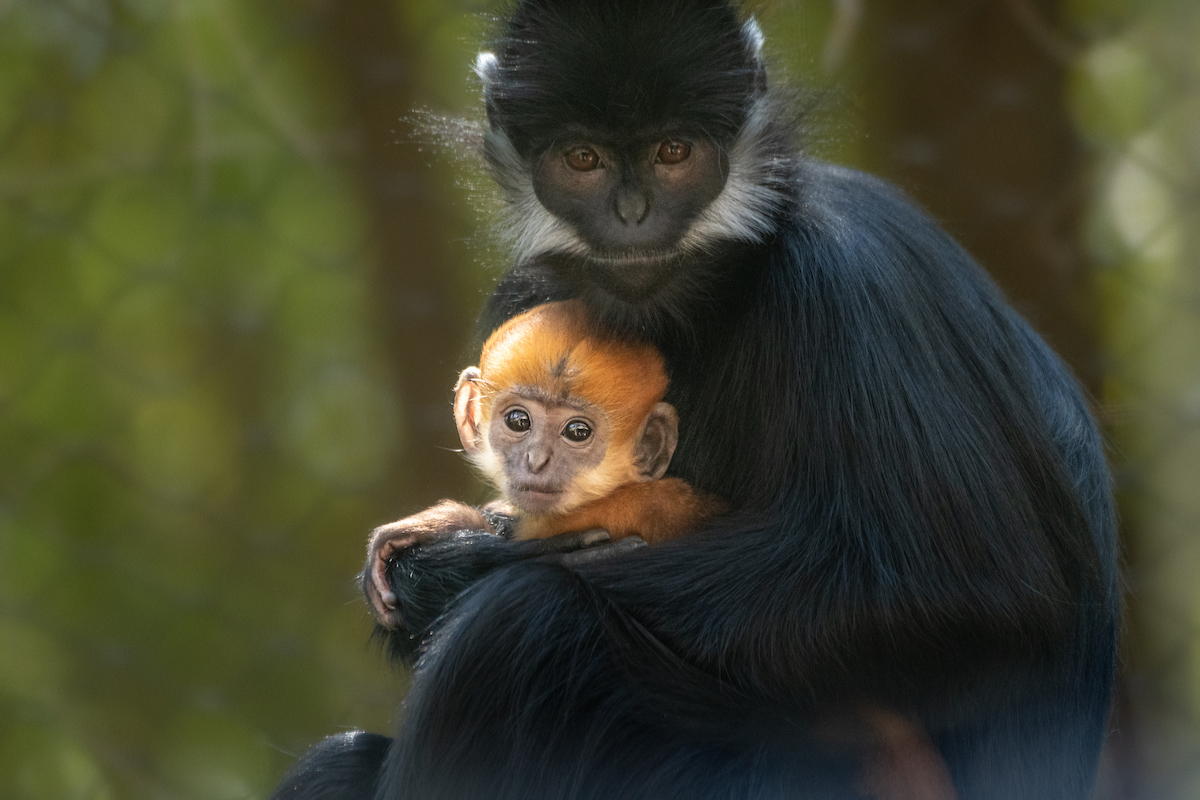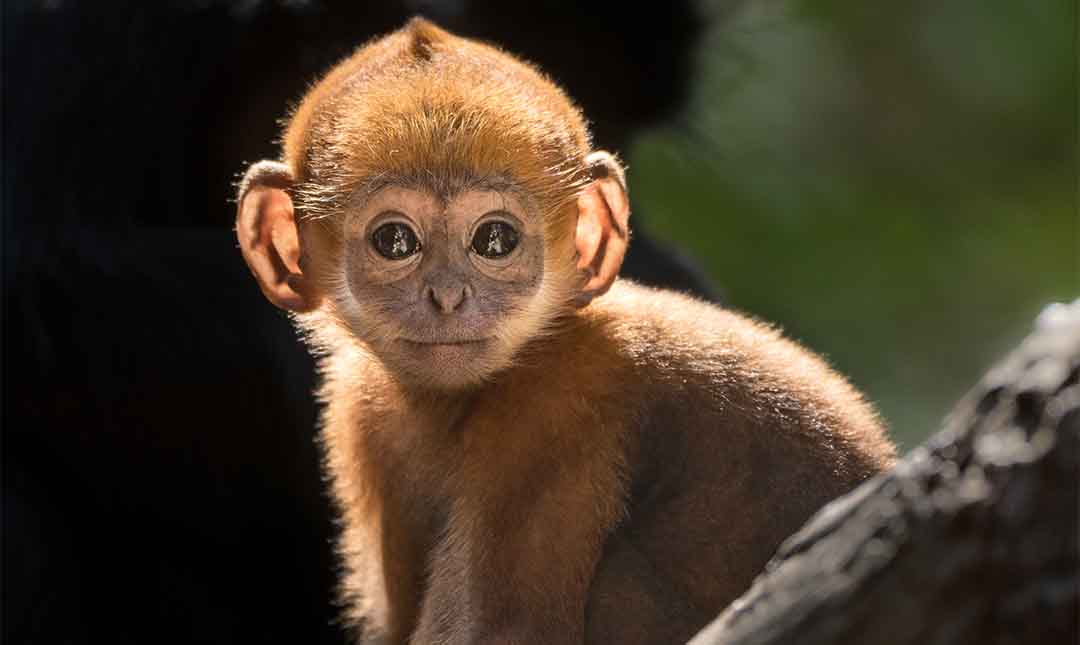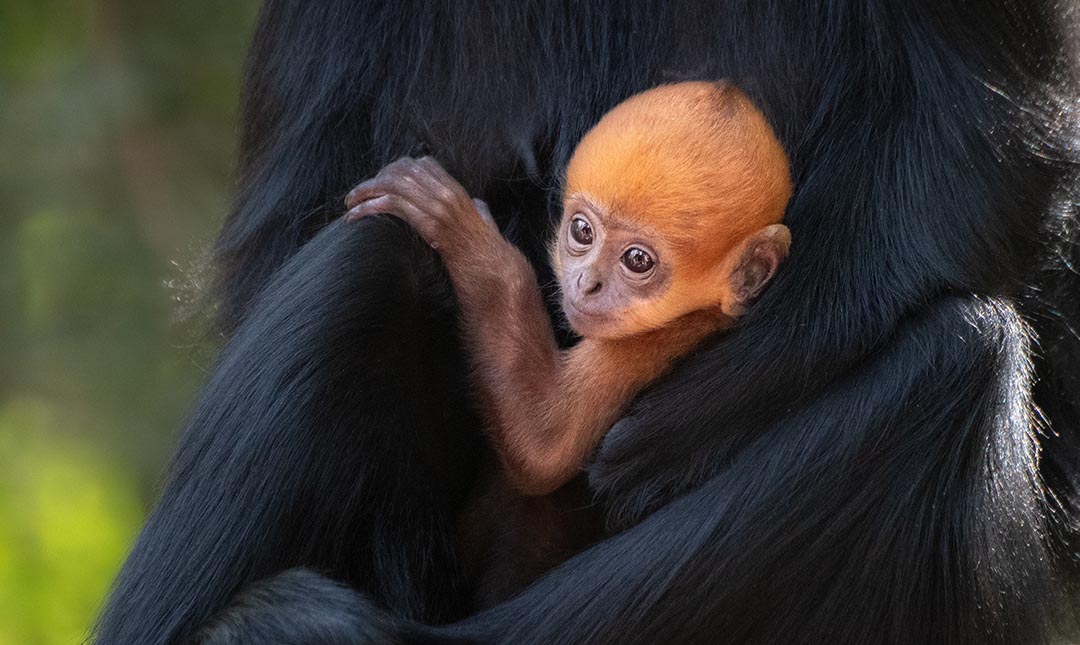About
François’s langurs are found in karst landscapes formed by the erosion of limestone. These areas often include caves and cliffs that provide the animals with protection from the rain, cold, and predators. After foraging for leaves in the morning and late afternoon, they can often be seen resting and grooming on narrow ledges 40 feet above the ground. They move through trees using a form of locomotion called semi-brachiation, swinging their arms to the next branch and getting a firm hold before swinging over the rest of their body. They also make impressive leaps between treetops, propelled by their long hind legs and using their long tails for balance. Enlarged salivary glands, a stomach with sac-like expansions, and special bacteria help these monkeys digest fibrous leaves and other vegetation.
François’s langurs live in family groups of five to seven individuals comprising one male, several females, and their offspring. Pregnancies last six to seven months and result in a single infant born with bright apricot-orange hair. This neonatal coloration is believed to elicit the care-taking instincts of females in the group and allomothering, a behavior in which other females help the mother by holding, carrying, and babysitting the infant. Within one year, the newborn’s fur will change to the glossy black of the parents. François’ langurs are endangered due to habitat loss and illegal hunting.
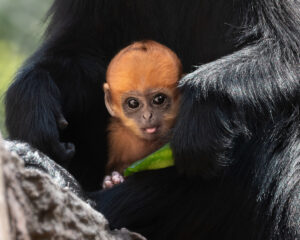
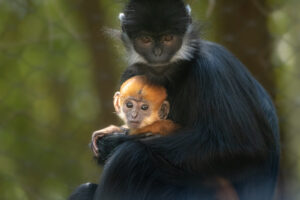
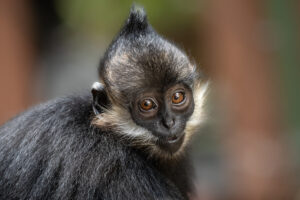
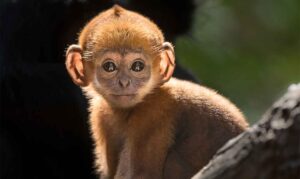

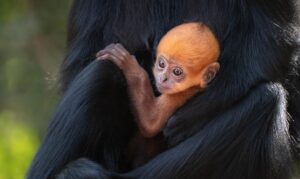
Habitat
Francois’s langurs live in tropical and subtropical forests with limestone terrain in fragmented areas of southern China, northeastern Vietnam, and Laos. The custom treehouse habitat that is home to the Zoo’s langurs was built by Animal Planet’s Treehouse Masters.
Diet
Langurs are leaf-eating monkeys. They prefer young leaves with a higher moisture content, but also eat bark, shoots, seeds, fruit, flowers, nectar, and insects.
Physical Characteristics
These monkeys have a body length of up to 26 inches with a tail that can reach 38 inches long. Their weight ranges from 14 to 16 pounds and their lifespan both in the wild and in human care is estimated to be up to 20 years.

